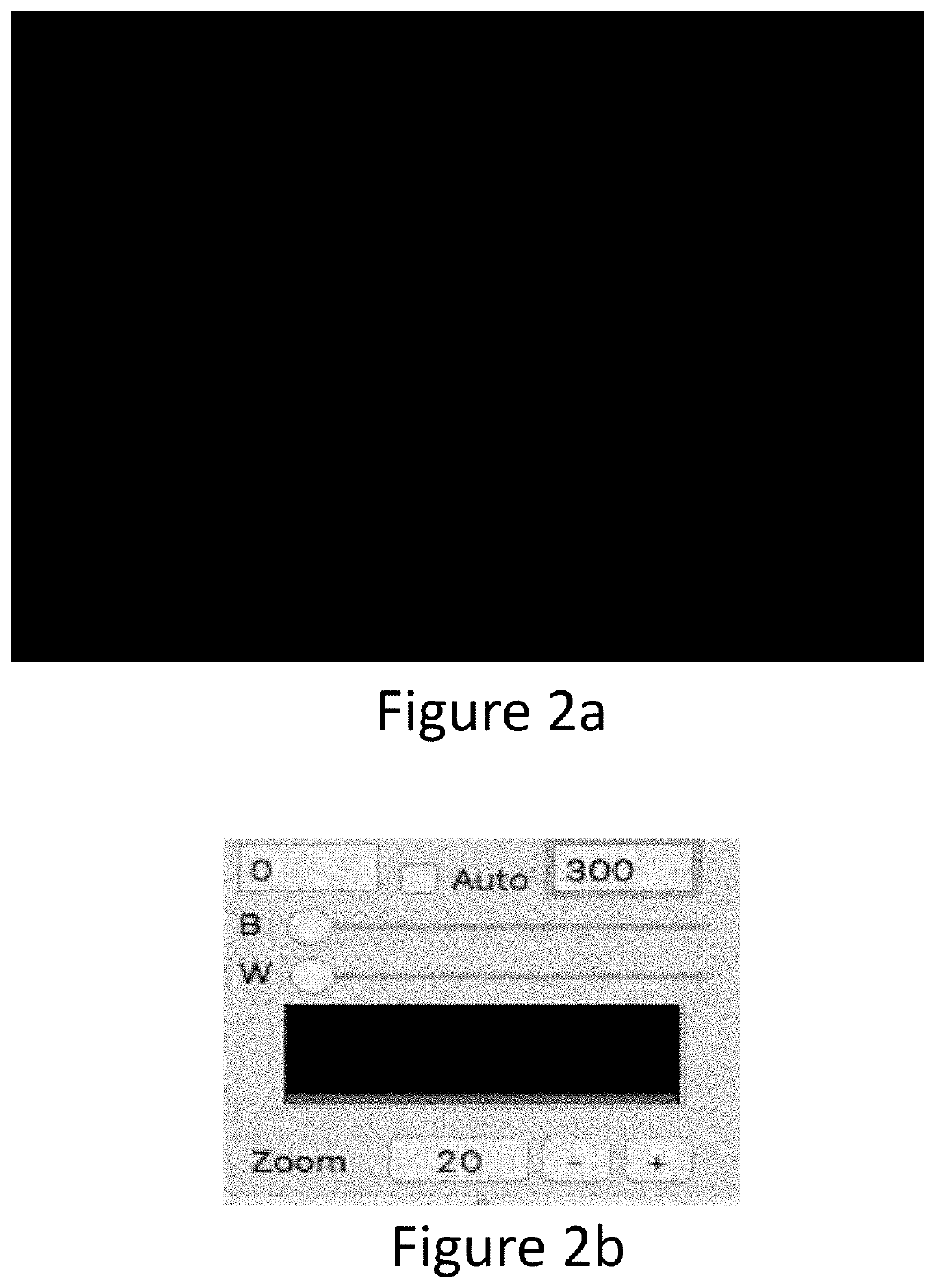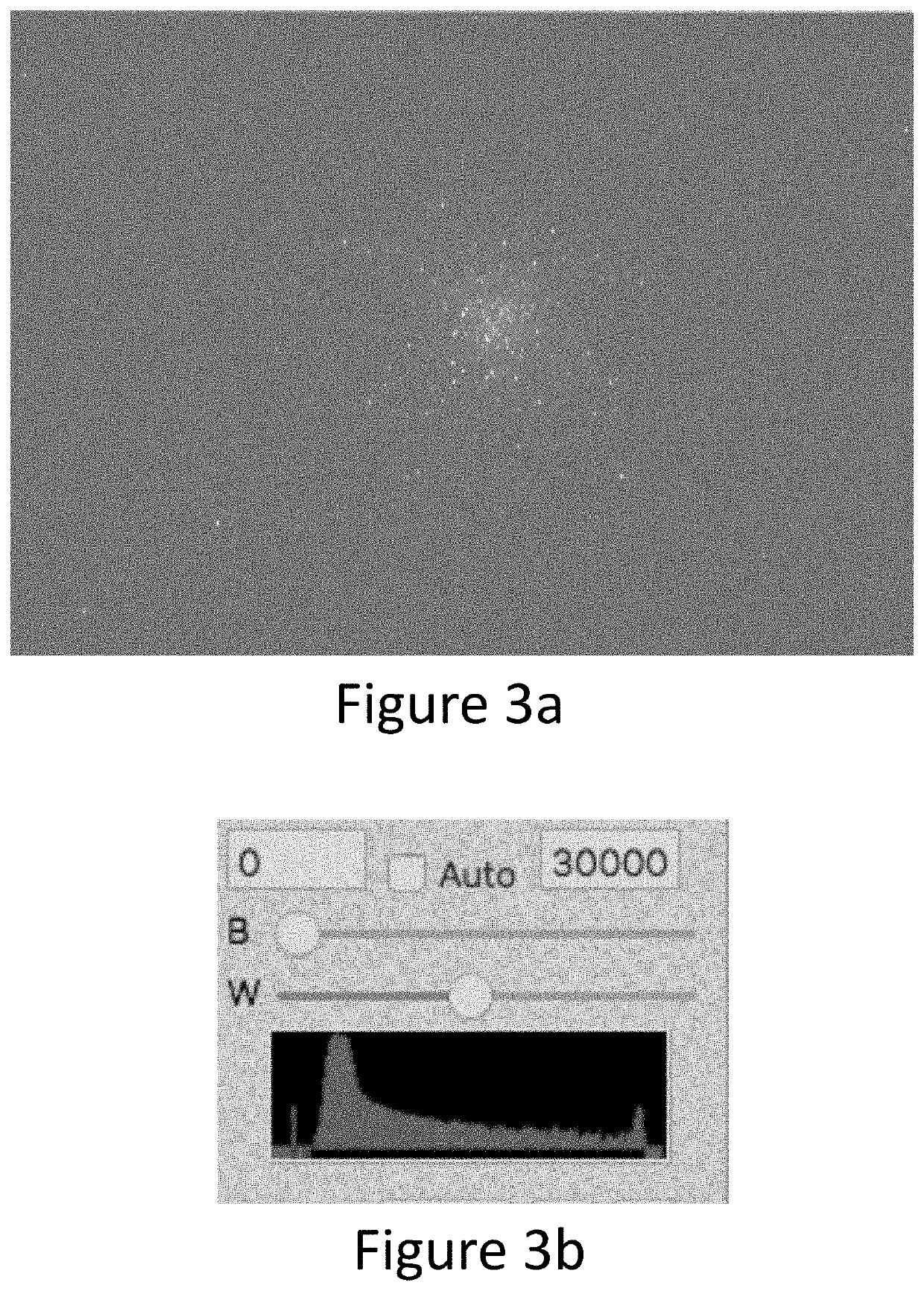Method to obtain data cubes of low intensity intrinsic spectral images when imaging under high illumination conditions without the use of filters
a data cube and high illumination technology, applied in the field of obtaining imaging data cubes, can solve the problems of limited imaging of astronomical objects, limited dark sky earth bound astro-imaging, and inability to accurately estimate the exact time of foreground components, so as to reduce the apparent over exposure
- Summary
- Abstract
- Description
- Claims
- Application Information
AI Technical Summary
Benefits of technology
Problems solved by technology
Method used
Image
Examples
example 1
[0073]Equipment
[0074]The data cubes were obtained using an AstroPhysics 104 mm refractor affixed with a modified Canon T2i DSLR camera with the infrared filter removed. The telescope was mounted on a Sirius GoTo tracking mount. Focusing was done manually using the end stop of the focus train as the defocused setting and a mechanical focusing guide to return the telescope to the focused position. The data cubes were taken during the week of a full moon.
[0075]Camera Calibration Data
[0076]The images were obtained in the RAW monochrome format to ensure that there was no compression of the data. A set of six dark field exposures was obtained with the lens cap on the telescope and their average was used to remove hot pixels on the sensor array of the camera. The empty field of view was chosen to be located at a region of the sky that contained no stars or objects having a magnitude less than 8 per arc-sect. In other words, no element of said empty field of view has a magnitude less than 8...
example 2
[0087]Equipment
[0088]For this example, the same equipment as the one used in Example 1 was used.
[0089]Camera Calibration Data
[0090]The calibration of the camera was performed as in accordance with the calibration of Example 1 where dark field exposures were taken to eliminate any hot pixels in the field of view. An empty field of view was chosen such that no star had a magnitude less than 8 per arc-sect. The images were obtained in monochrome RAW format to ensure that there was no compression of the data.
[0091]Target Imaging Data
[0092]The telescope was then pointed and focused on the Moon as the target object. An exposure of 1 / 50 of a second at an ISO of 100 was used to image the target field of view. Then the telescope was quickly defocused and a second image of the target was obtained at the same exposure and ISO settings.
[0093]Intrinsic Processing
[0094]The data and image processing was performed using the same methodology as in Example 1. The initial image of the Moon appeared to...
example 3
[0095]Equipment
[0096]For this example, the same equipment as the one used in Example 1 was used.
[0097]Camera Calibration Data
[0098]The calibration of the camera was performed as in accordance with the calibration of Example 1 where dark field exposures were taken to eliminate any hot pixels in the field of view. An empty field of view was chosen such that no star had a magnitude less than 8 per arc-sect. The images were obtained in monochrome and color in a non-compressed JPEG format.
[0099]Target Imaging Data
[0100]The telescope was then pointed and focused on the emission nebula M8, the Lagoon Nebula as the target object. An in-focus exposure of 15 seconds at an ISO of 1600 was use to image the target field of view. Then the telescope was quickly defocused and a second image of the same target was obtained. According to an embodiment of the invention, this procedure was repeated four more times to obtain five focused / defocused data cubes.
[0101]Intrinsic Processing
[0102]The five sets...
PUM
 Login to View More
Login to View More Abstract
Description
Claims
Application Information
 Login to View More
Login to View More - R&D
- Intellectual Property
- Life Sciences
- Materials
- Tech Scout
- Unparalleled Data Quality
- Higher Quality Content
- 60% Fewer Hallucinations
Browse by: Latest US Patents, China's latest patents, Technical Efficacy Thesaurus, Application Domain, Technology Topic, Popular Technical Reports.
© 2025 PatSnap. All rights reserved.Legal|Privacy policy|Modern Slavery Act Transparency Statement|Sitemap|About US| Contact US: help@patsnap.com



